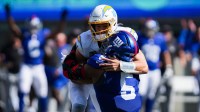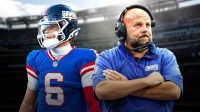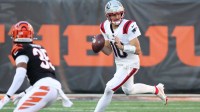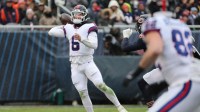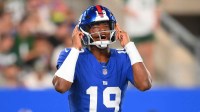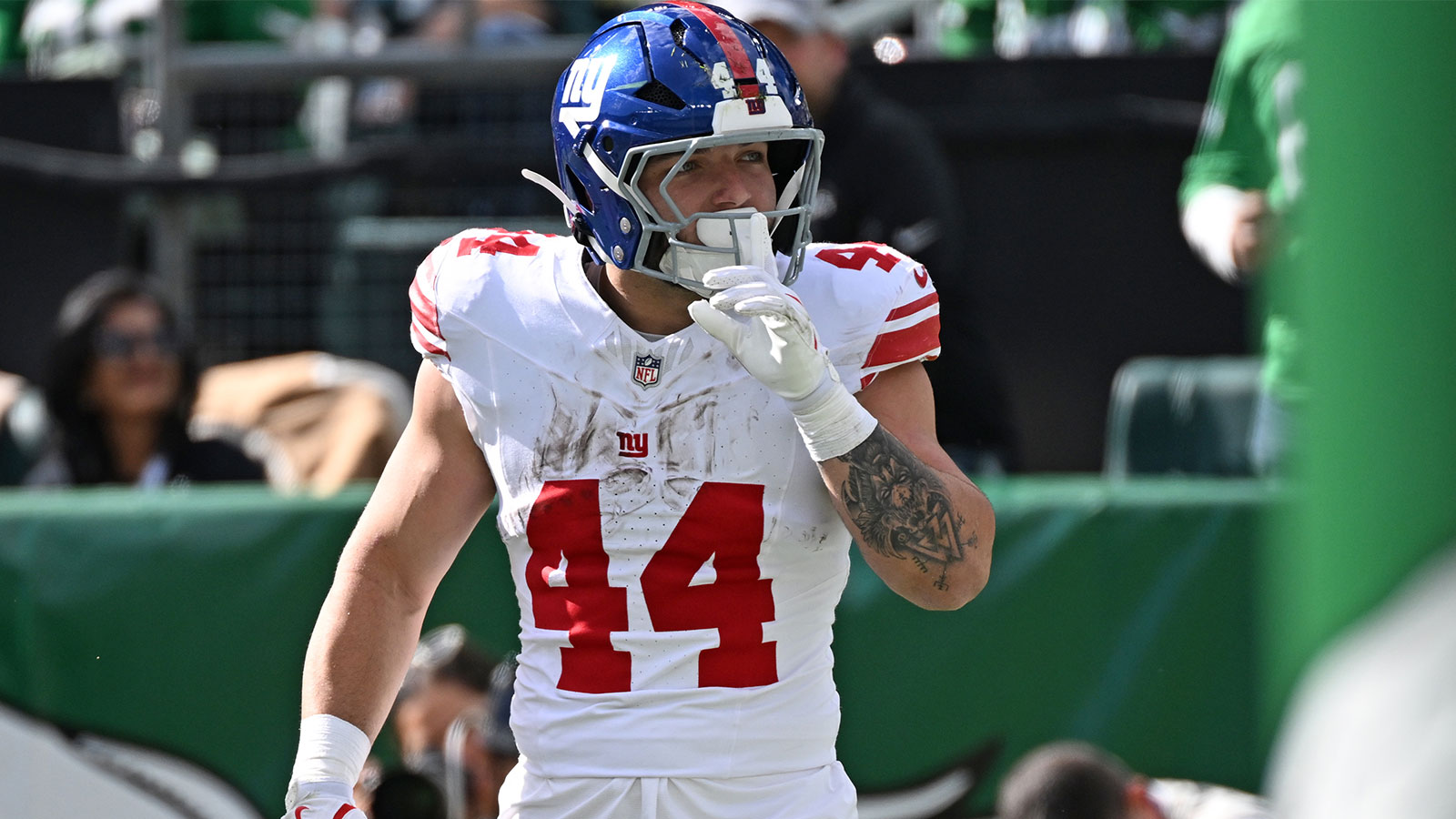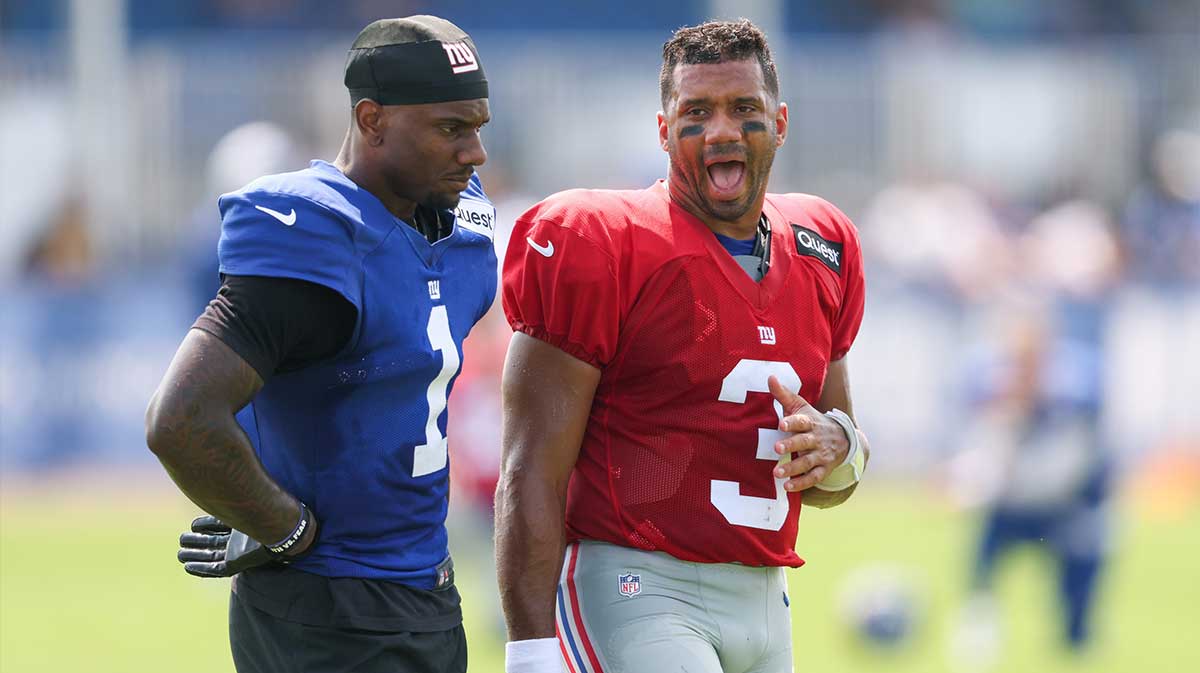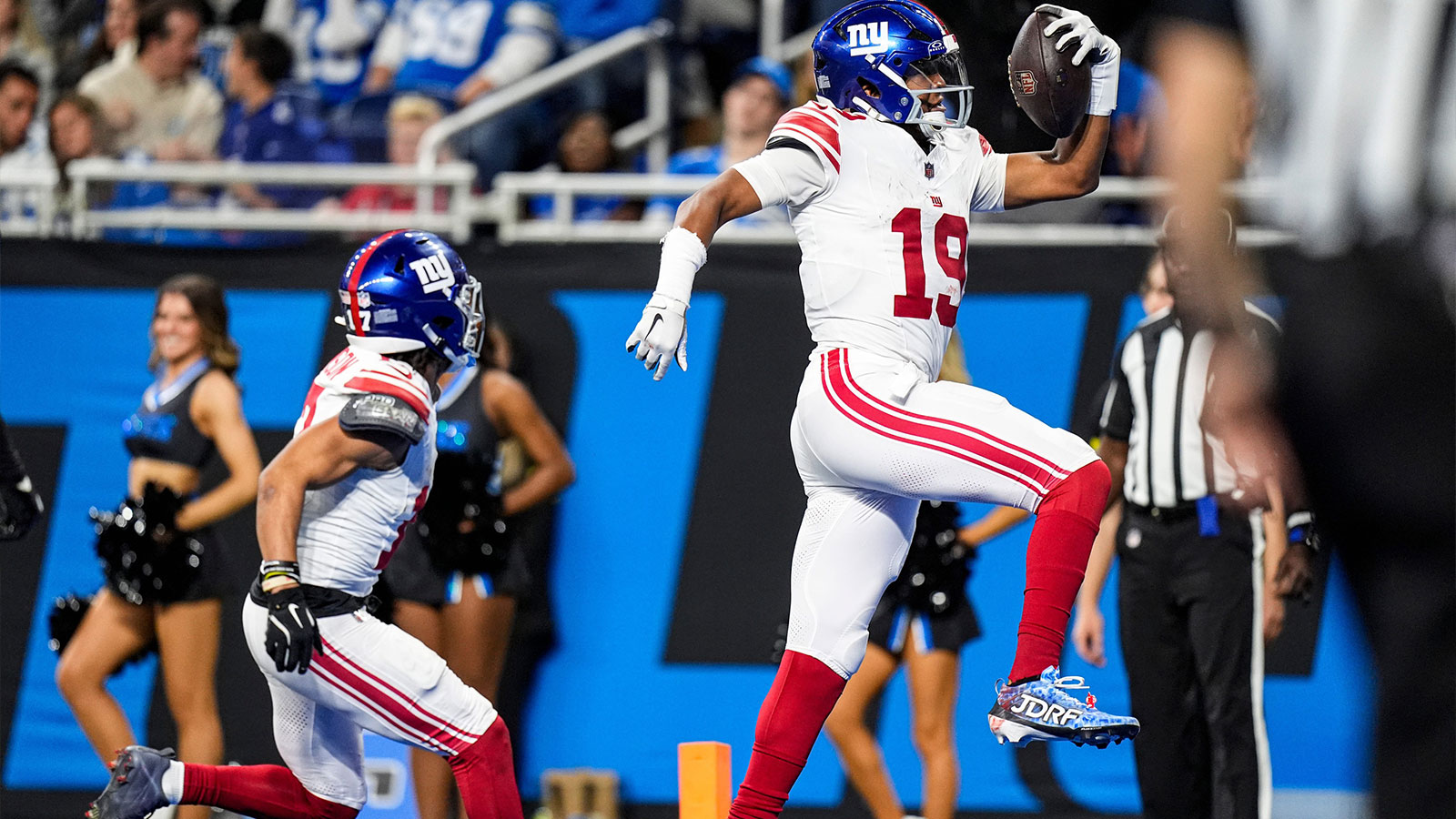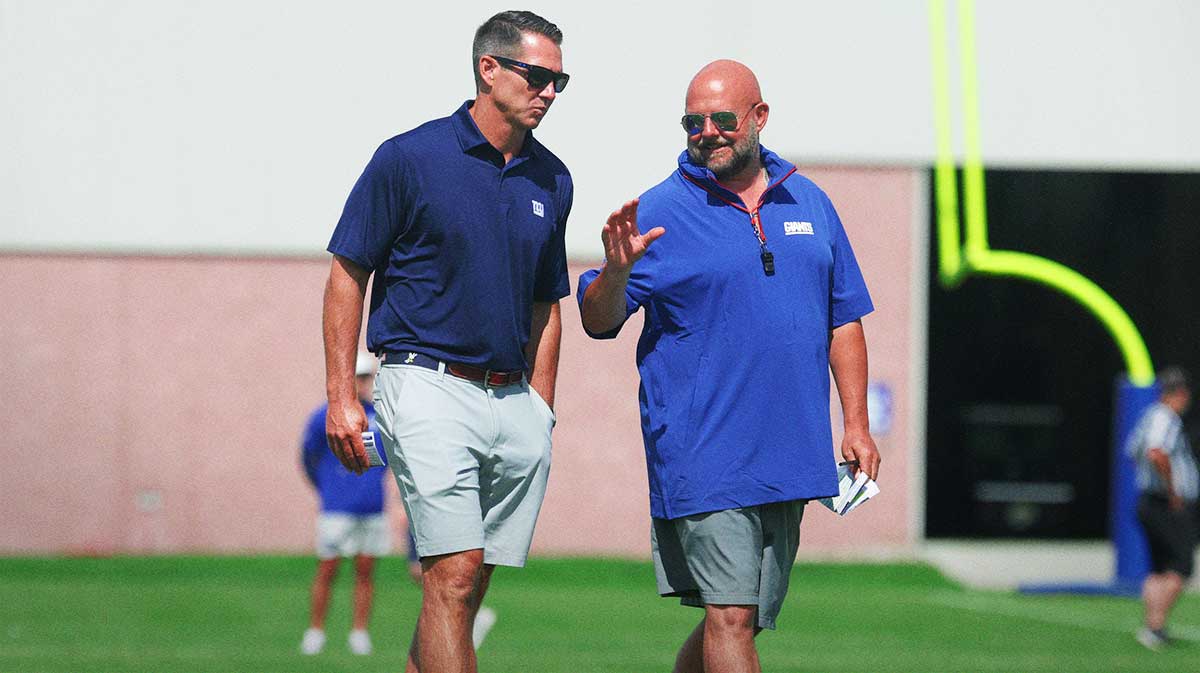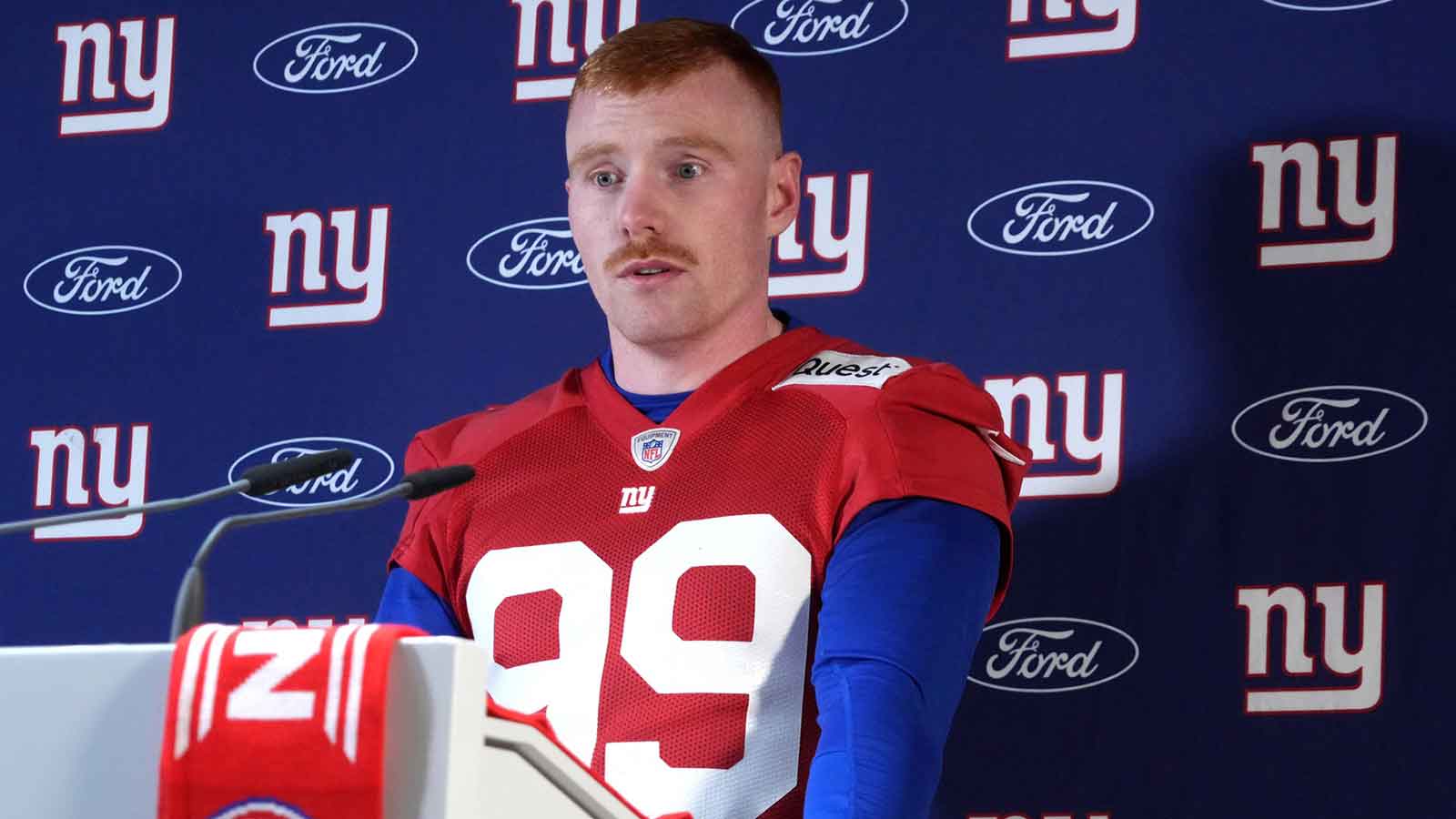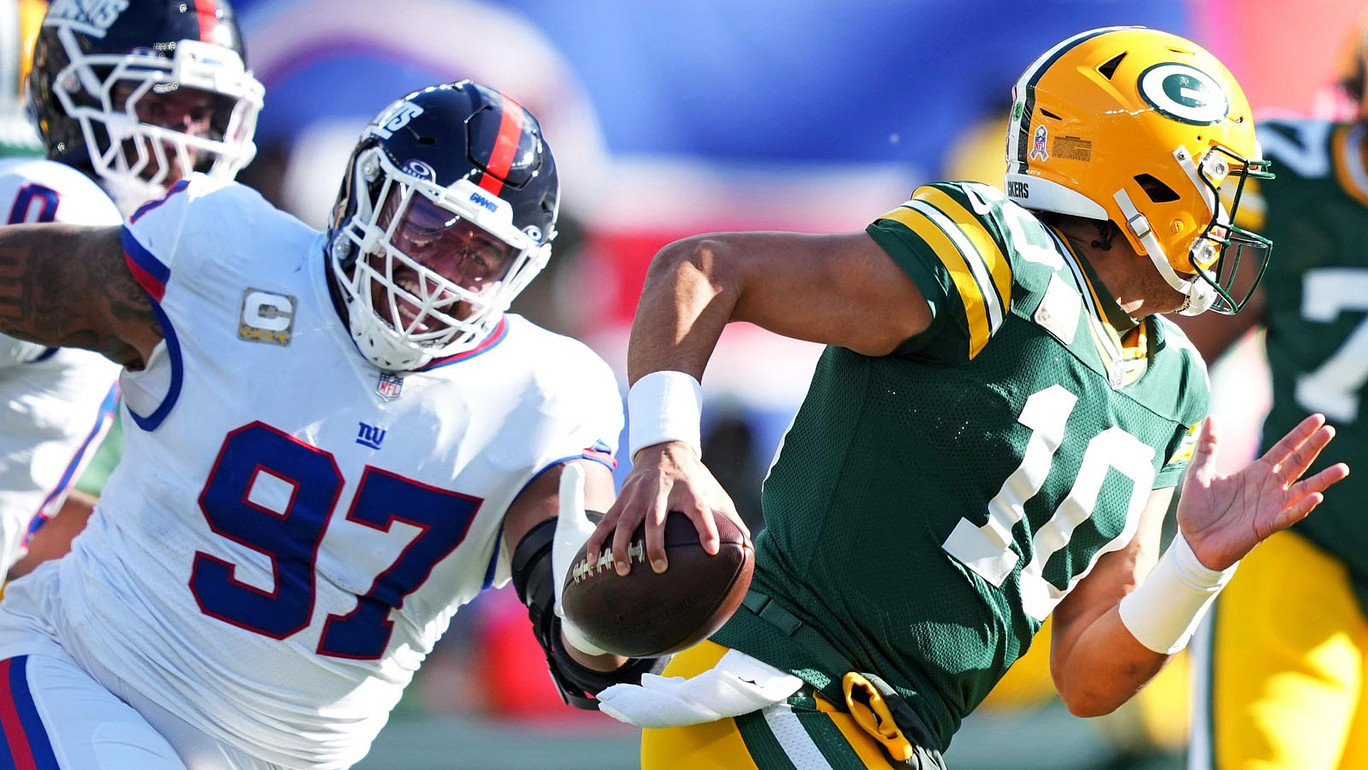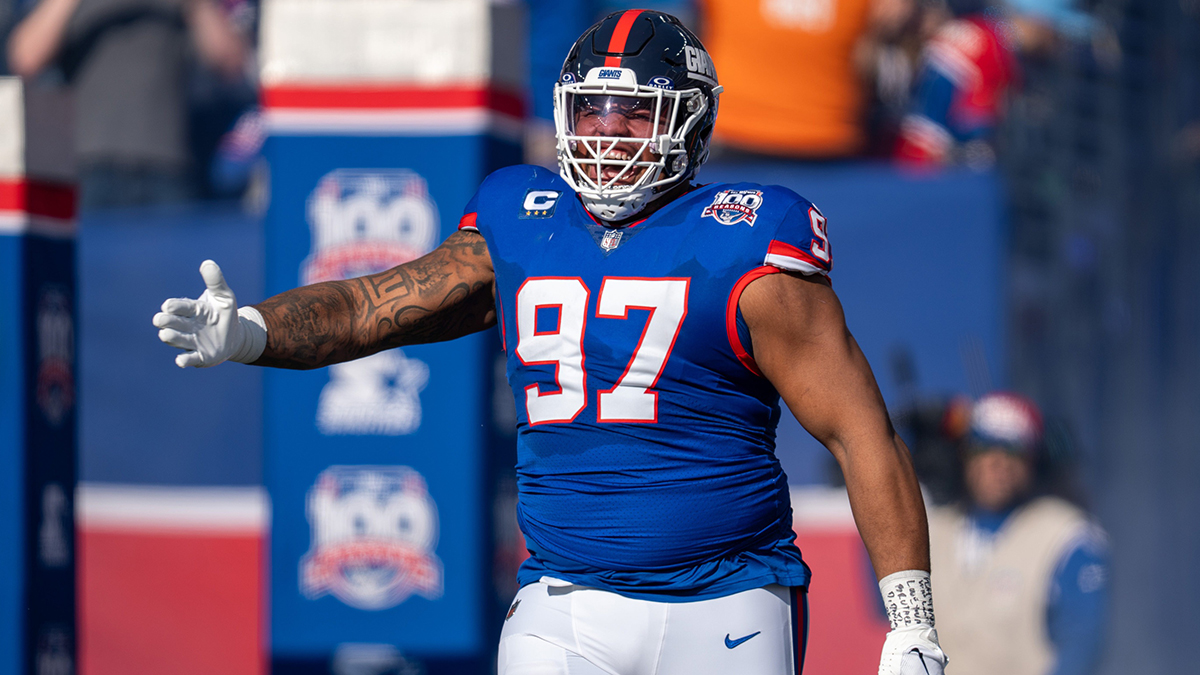Three of the New York Giants' first five selections in the 2020 NFL Draft went to addressing their offensive line, which included using the fourth-overall selection on Georgia offensive tackle Andrew Thomas. The team’s left tackle of the future is a great addition to helping keep sophomore quarterback Daniel Jones upright in the pocket in the next four-plus seasons.
This offseason, Jones reached out to his former head coach at Duke University, David Cutcliffe, and former Dallas Cowboys quarterback Tony Romo, for some tips on how to improve upon his ball security, which resulted in 18 fumbles last year alone.
For Jones, his ability to hold onto the ball needs to improve, but last year’s suspect offensive line unit was a big reason why he did not always go to the ground with the ball.
Labeling this as a “simple fix,” according to an interview with NFL Network’s Kimberly Jones, Jones is focusing his offseason efforts on improving upon his “mindfulness” while running through multiple different drills that can help put a higher importance on ball security.
Other quarterbacks have experienced this same problem in the early stages of their NFL careers, as the New York Jets' Sam Darnold fumbled the ball 11 times across 13 games in just 2019 and has 16 career fumbles. While collegiate experience and how a player holds the ball are both likely major causes of this lingering problem, the offensive line is certainly at fault, too.
In his rookie season, Jones put up respectable numbers, throwing for over 3,000 yards, 24 touchdowns and 12 interceptions, creating an even 2:1 ratio. And while some individuals, Stephen A. Smith for example, feel that another NFC East quarterback (Dwayne Haskins) is primed to put up a better 2020 season than Jones, the weapons that Jones has around him — which does include the offensive line — stacks up to be better than what Haskins has at his disposal.
Twelve of Jones' 18 fumbles were caused during passing situations, with the other six happening while deemed to be in rushing attempts, which creates another 2:1 ratio, but not one that Jones should be pleased about. It is the loss of the football in the pocket that is much more concerning than the loss of the football while trying to pick up yardage outside of the pocket and across the line of scrimmage.
He was also sacked 38 times, behind an offensive line that read like this:
LT Nate Solder
LG Will Hernandez
C Jon Halapio
RG Kevin Zeitler
RT Mike Remmers
It is fair to say that the four-year, $62 million deal that Solder was signed to last season has not worked out so far, but a likely move to the right tackle position could help him return to the caliber of player he was for the New England Patriots in the past, which justified paying him as much as the Giants did.
Will Hernandez was drafted out of UTEP with the 34th overall selection in 2018 and managed to be one of eight Giants to start all 16 games of last year’s regular season. Hernandez is a mauler and looks to be a solid get for this team. He should become a mainstay in their interior offensive line group for a while.
Jon Halapio is currently a free agent, making the lone center on the team’s roster Spencer Pulley, who has been with the team for two seasons and made one start last season.
Kevin Zeitler was the prized player who came back to the Giants in the Olivier Vernon deal with the Cleveland Browns, and he has been a steady force at right guard for this team. He is one of the best interior offensive linemen in the entire league.
Mike Remmers was a free agent following the 2019 season and signed a deal with the Super Bowl-winning Kansas City Chiefs at the end of March.
With that status update, there are three returning members of the OL unit for 2020 — Solder, Hernandez and Zeitler — and are being joined by three draftees who should be able to help out as soon as Week 1.
Thomas is going to be the team’s left tackle of both the present and future, which will in turn move Solder over to the right side and fill the vacancy that was left by Remmers leaving for Kansas City.
Third-round pick (99th overall) offensive tackle Matt Peart from UConn is looked at as one of the more athletic tackles in the class and was deemed a steal in the third round by many analysts. While not projecting to fill a starting spot right away, he can help provide insurance as a swing tackle if either Thomas or Solder struggle or have to miss time with injuries.
The team’s lone interior offensive line addition of the draft, guard Shane Lemieux from Oregon, was taken in the fifth round (150th overall) and is a solid backup option behind both Hernandez and Zeitler. While mainly a left guard as a Duck, Lemieux can move around the interior of the offensive line between guard spots, providing great protection. He is especially known for his blocking that fits well in power running offenses, which can help free up holes for Saquon Barkley.
The main takeaway from the draft is that the Giants did not come out of it with a sure-fire addition at center, so for the time being, Pulley is going to be that guy for the team. Now, their 2020 offensive line projects to look something like this:
LT Andrew Thomas
LG Will Hernandez
C Spencer Pulley
RG Kevin Zeitler
RT Nate Solder
That five-man breakdown is night and day when compared with the line that Jones was forced to survive behind last season. And even though three starters from 2019 remain entrenched in the starting lineup, it is the three best members of the five who started last year.
The Giants came into the draft with a pretty obvious prerogative for what they felt their roster was lacking — competent offensive line talent that could help keep their franchise quarterback on his feet and with the ball in his hand. And by using three selections on the line, they followed through with meeting their need and look to have addressed it for the future.
Jones, meanwhile, needs to hold up his end of the bargain and keep a stronger grip on the football, both while in passing and rushing situations. Eighteen fumbles, regardless of how many are lost, is an excessive amount that is unacceptable for a starting quarterback, and while the leniency for a rookie signal caller is quite high, his second season will need to produce much better numbers in this category if he truly wants to improve his numbers and his handle on the game.
Twenty four touchdown passes, 2 rushing touchdowns and over 3,300 total yards in his rookie season — while Jones may have received the short end of the stick ever since he was drafted (by fans and media personnel alike), his skills more than justify his draft status.
And while he was not a sexy name by any means, his abilities are there to be able to take that next step in his second year, paving the way for the Giants to finally get closer to fielding a competitive team while seeing Jones produce a breakout campaign in 2020.


